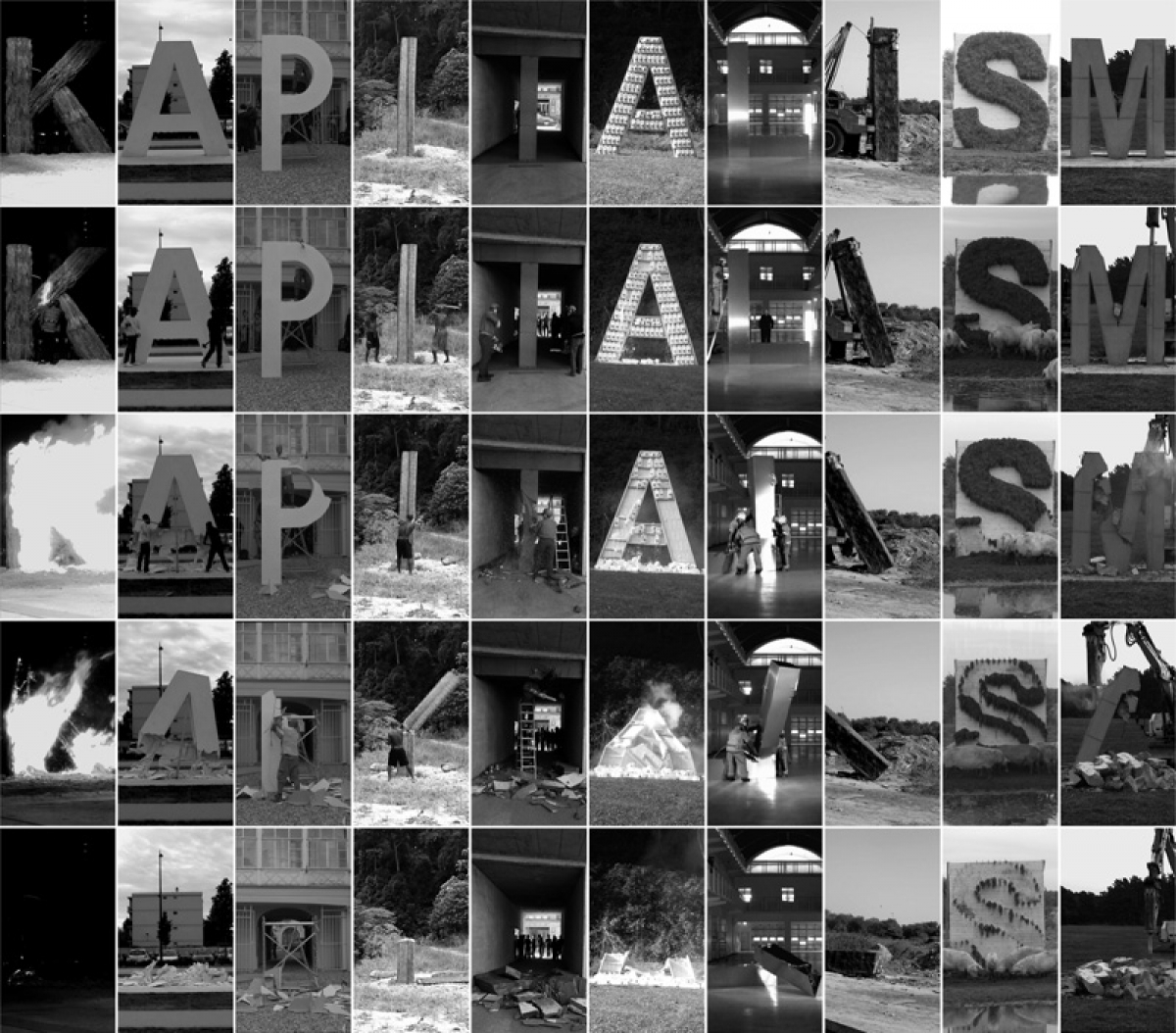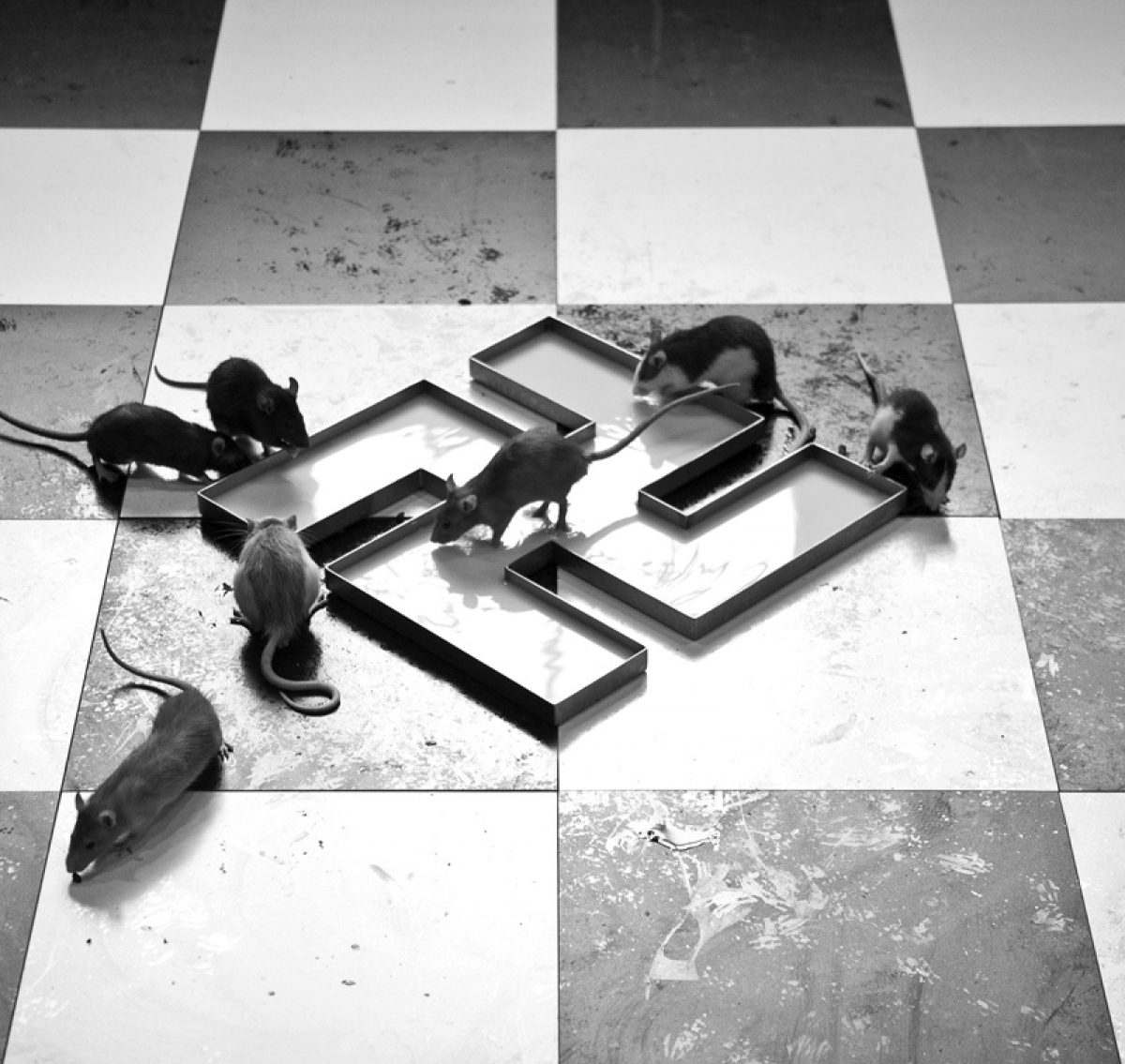"The Trough" Santiago Sierra

PROMETEOGALLERY
Via G. Ventura 3 20134 Milan
T. + 39 02 26924450 e-mail:
September 16 > November 12, 2016
 Santiago Sierra, Santiago Sierra, The Athenian Dogs, 2015 |
 Santiago Sierra, Destroyed Word, 2010 - 2012. Several locations Santiago Sierra, Destroyed Word, 2010 - 2012. Several locations
|
 Santiago Sierra, The Trough, 2015. Centrale Fies, Dro (TN), Italy Santiago Sierra, The Trough, 2015. Centrale Fies, Dro (TN), Italy
|
Prometeogallery is proud to present The Trough, a solo exhibition by Spanish artist Santiago Sierra. The exhibition is the second and last part of a project begun in July 2015 at Centrale Fies in Dro (TN) in the context of the Drodesera Festival.
On the occasion of the festival, the first part of the work featured a laevogyrate swastika placed at a forty-five degree angle on a black & white tiled surface surrounded by four average-height walls separating off the space but allowing the public to get up close to the lives in captivity of a group of ordinary mice. The swastika acted as a recipient containing soymilk, a trough the rodents went to for food. Moulded in this way, the swastika – this time dextrorotatory - was later moved by the artist to the Karni Mata temple in Deshnoke in Rajastan, devoted to a Hindu woman worshipped as the incarnation of the goddess Durga – 'the invincible', 'the inaccessible' – where mice are venerated.
Each element of The Trough goes beyond representation to open a dialogue with history in an interweaving of symbols that have acquired different meanings over the various eras and cultures. From the initial symbolism of the swastika that from the Palaeolithic to the modern age stood for good fortune and that in contemporary history saw its symbolic meaning inverted negatively, to the black and white chessboard pavement of the Karni Mata temple rebuilt in Dro, from the mice to the milk and its white colour, to the marble pedestal that becomes the supporting base to the sculpture initially used as a trough.
The Trough is a circular exhibition through which the artist invites the public to go beyond stereotypes and simplifications.
The exhibition is accompanied by a critical text by Fernando Baena.
A culinary event dedicated to the cuisine of the Andes will be held during the inauguration of the event.
On the occasion of the festival, the first part of the work featured a laevogyrate swastika placed at a forty-five degree angle on a black & white tiled surface surrounded by four average-height walls separating off the space but allowing the public to get up close to the lives in captivity of a group of ordinary mice. The swastika acted as a recipient containing soymilk, a trough the rodents went to for food. Moulded in this way, the swastika – this time dextrorotatory - was later moved by the artist to the Karni Mata temple in Deshnoke in Rajastan, devoted to a Hindu woman worshipped as the incarnation of the goddess Durga – 'the invincible', 'the inaccessible' – where mice are venerated.
Each element of The Trough goes beyond representation to open a dialogue with history in an interweaving of symbols that have acquired different meanings over the various eras and cultures. From the initial symbolism of the swastika that from the Palaeolithic to the modern age stood for good fortune and that in contemporary history saw its symbolic meaning inverted negatively, to the black and white chessboard pavement of the Karni Mata temple rebuilt in Dro, from the mice to the milk and its white colour, to the marble pedestal that becomes the supporting base to the sculpture initially used as a trough.
The Trough is a circular exhibition through which the artist invites the public to go beyond stereotypes and simplifications.
The exhibition is accompanied by a critical text by Fernando Baena.
A culinary event dedicated to the cuisine of the Andes will be held during the inauguration of the event.




Opening:
Thursday, September 15, 2016 at 7pm







